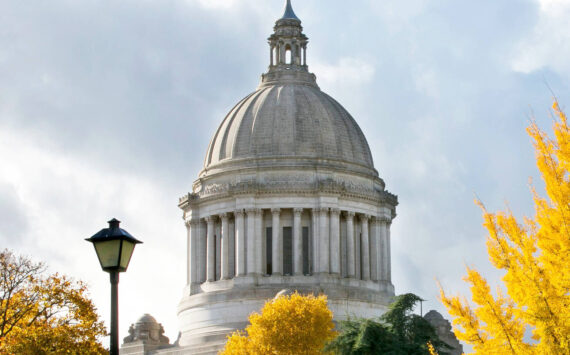By Morf Morford
Tacoma Daily Index
What are we building?
It’s a simple question, but like every seemingly simple question, it’s not so simple when you take a long look, or a close look at it.
At one immediate and obvious level, it could not be more apparent; we are building much needed housing.
Who could oppose that?
If any housing unit, at any neighborhood, at any scale is questioned, cries of NIMBYism (Not-In-My-Neighborhood) emerge.
Advocates of progress, density and development consistently drown out, or out-vote any who question what often seems like growth for growth’s sake.
Growth has been a reliable force, something like a gravitational or magnetic “pull” that has literally defined and dominated our landscape for centuries.
The trendy term for the human impact on our terrain is “the built environment”.
The “built environment” is, like our initial question, deceptively simple. It is what people have built of course.
As Wikipedia defines the term; In urban planning, architecture and civil engineering, the term built environment, or built world, refers to the human-made environment that provides the setting for human activity, including homes, buildings, zoning, streets, sidewalks, open spaces, transportation options, and more.
The “built environment” is all that and more. Much more.
Our human-constructed (and, one would hope, human maintaned) power grids, waterways, sewage displacement and disposal, garbage collection and, at least in our area, near-indefinite storage and burial, and the near total infusion of nano-plastic particles in our atmosphere and even bloodstreams has dramatically, if not permanently reshaped the “natural” environment.
No project, on any scale, is just a project
No single building is just a building.
Every construction project is a series of plans, intentions and near-permanent impacts on the neighborhoods, the economy and the lives of both residents and those who live or work anywhere near the site.
In the topsy-turvy world of unintended consequences, something else has emerged; these brick and steel and glass projects, with their power grids, water and sewer systems are more, not less vulnerable, to potential disasters.
About eight out of every ten US residents lives in an urban “built” environment.
Because of this high population density in urban areas, every potential disaster and hazard from a weather- or climate-related event in our country can threaten the property, lives, and livelihoods of large numbers of Americans.
And cause immense damage to local and regional budgets – and ecosystems.
Any construction project generates a huge amount of waste- its destruction generates even more.
If nothing else, our projects should be built to last.
In Europe many single family homes and apartment units have been continually occupied for centuries.
It took fierce bombing of world wars to destroy much of them – not shoddy construction.
Those buildings that remained, or were rebuilt, were a testimony to the people and community they represented.
In fact I would argue that every large construction project, even every small one, is a reflection of the values, identity and yes, destiny of the community.
The built environment, in every neighborhood, has a huge and enduring role to play in building a healthier, more sustainable world.
This is becoming even more apparent thanks to the COVID-19 pandemic.
A building is never just a building. Harmonizing health, energy efficiency and resilience will deliver stronger organizations, healthier communities and more stable economies, as well as better buildings.
Every building is a testimony, a witness, a link in the chain, a chapter in the book of its larger community and shared history, if not personality.
No look-alike building formula will suit all neighborhoods – especially established and historic areas.
And if you think a building project is complicated (and it is) consider the corollary impacts from water run-off to traffic patterns.
Once you factor in local schools, shifts in demographic patterns (as in families getting smaller and more people living essentially single for the long term) rising material costs, zoning changes and technological demands (like wifi) the importance of collaborative insight and effort becomes even more irrefutable.
Consider the sheer impact of aging; the number of people aged 60 or over almost tripled from 205 million in 1950 to 606 million in 2000. Another massive increase is expected in the first half of this century with just under 2 billion 60-plus people expected by 2050.
Yes, any given project is the result of a vast array of interior designers, architects and engineers, landscape designers, urban designers, and city, regional, and even global planners.
But what will the verdict of any of those people be a decade, a generation, even a century from now?
The Greater Puget Sound area, from Olympia to Bellingham, and everywhere in between, holds many architectural marvels.
Most of them are from a century or more ago.
But where are the architectural contributions from the past decade or two? Or three?
Or even under construction right now?
Where are the projects neighbors would welcome? The projects we all could be proud of? The projects worthy of study and admiration many years from now?
Those boxy, look-alike projects that could have been, and have been, built anywhere for any-town USA won’t be those sought-after housing or the places featured in the architectural journals – and they won’t meet the standard of “affordable housing” (if that term even exists a few years from now) and all this assumes that they will still be standing in twenty, thirty or fifty years.
Housing and construction is a crucial issue for every community. It’s central to every family and community.
Construction is (literally) foundational to every neighborhood. It is the first thing that visitors see.
It is where we live and work. And how we get there.
At its core though, construction is not that complicated. In fact it could not be more basic.
We just need to do it right.






